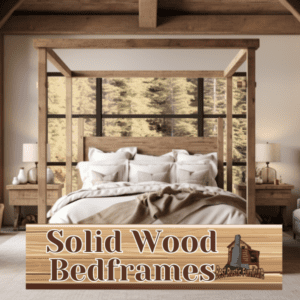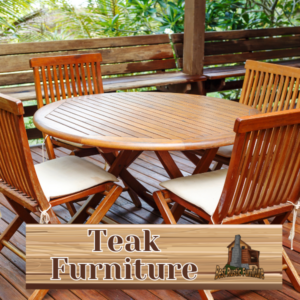
The Revival of Mid-Century Modern Interiors is an exciting trend in the world of interior design. This design style, originating from the mid-20th century, has made a comeback in recent years, captivating homeowners and designers alike. With its unique blend of timeless aesthetics and functionality, mid-century modern design continues to captivate people’s attention.
Mid-century modern design is characterized by its clean lines, simplicity, and integration of nature in its elements. It emphasizes functionality, comfort, and an open, uncluttered layout. Key elements of mid-century modern interiors include organic shapes, minimalism, bold colors, and the use of materials such as wood, metal, and glass.
To understand the revival of mid-century modern interiors, it is essential to delve into its history and influences. Originating in the aftermath of World War II, mid-century modern design drew inspiration from various movements, including the Bauhaus and Scandinavian design. Its popularity boomed during the prosperous post-war era, as it represented a fresh, forward-thinking approach.
Today, mid-century modern design is experiencing a resurgence, and there are several reasons behind its renewed popularity. Its clean and timeless aesthetic appeals to those seeking a balance between retro nostalgia and contemporary sensibilities. Its focus on functionality aligns with the needs of modern living, where efficiency and versatility are paramount.
It is important to note the distinction between mid-century modern and contemporary design. While mid-century modern refers to a specific era and design style, contemporary design encompasses a broader range of current trends and styles. Understanding this difference allows homeowners to make informed design choices that suit their personal preferences.
When incorporating mid-century modern design into your home, certain characteristics can help create an authentic and visually appealing space. Organic shapes and materials, minimalism, and the use of bold colors and patterns are key elements to consider. furniture and decor choices, color palettes, and creating an open and airy space are crucial to achieving the desired mid-century modern aesthetic in your home.
As the revival of mid-century modern interiors continues to gain momentum, it offers homeowners a unique opportunity to embrace a design style that combines nostalgia and contemporary sophistication. Whether through select furniture pieces or a complete interior transformation, incorporating mid-century modern design elements can truly elevate your living space.
Key takeaways:
- Mid-century modern design is experiencing a revival: The clean lines, organic shapes, and timeless appeal of mid-century modern interiors are attracting homeowners, designers, and enthusiasts alike.
- Key elements of mid-century modern design: Organic shapes, minimalism, functionality, and bold colors and patterns are fundamental characteristics of mid-century modern interiors, creating a distinct and iconic aesthetic.
- Why mid-century modern design is making a comeback: The appeal of mid-century modern interiors lies in their ability to seamlessly blend the old with the new, creating spaces that are both nostalgic and relevant to contemporary lifestyles.
The Revival of Mid-Century Modern Interiors
When it comes to The Revival of Mid-Century Modern Interiors, there are several key elements to consider. Creating an authentic mid-century modern look involves incorporating iconic design elements such as clean lines, organic shapes, and bold colors. Furniture plays a crucial role, with pieces like Eames lounge chairs, Saarinen tulip tables, and Noguchi coffee tables being popular choices. Lighting is another important aspect, with fixtures like Sputnik chandeliers or Arco floor lamps adding a vintage touch. Don’t forget to incorporate retro accessories and artwork to complete the revival of mid-century modern interiors.
What is Mid-Century Modern Design?
Unleashing the essence of chic nostalgia, let’s dive into the captivating world of Mid-Century Modern Design. Discover the key elements that define these iconic interiors, drawing inspiration from the golden era of sleek lines, organic forms, and minimalist aesthetics. Get ready to embark on a journey that celebrates the timeless allure of Mid-Century Modern as we uncover the secrets behind its enduring popularity.
Key Elements of Mid-Century Modern Interiors
- Organic Shapes and Materials: Incorporating curved lines and natural materials like wood and leather create a connection to nature.
- Minimalism and Functionality: Emphasizing the essence of mid-century modern design, simplistic designs with clean lines and practical functionality.
- Bold Colors and Patterns: Adding personality and visual interest to the space, vibrant hues such as mustard yellow or teal, and graphic patterns are key elements of mid-century modern interiors.
- Iconic Furniture Pieces: Making a statement in any interior, mid-century modern classics like the Eames Lounge Chair or the Noguchi Coffee Table are essential elements of mid-century modern interiors.
The History of Mid-Century Modern Design
Step back in time and immerse yourself in the fascinating history of Mid-Century Modern design. Discover the origins and influences that shaped this iconic design movement. Uncover the captivating stories behind the birth of sleek lines, organic forms, and innovative materials. Join us on a journey through time as we explore the roots of Mid-Century Modern design and how it continues to inspire interior lovers around the world. Get ready to be transported to an era filled with remarkable creativity and timeless beauty.
Origins and Influences of Mid-Century Modern Design
Mid-century modern design originated in the mid-20th century and was influenced by various artistic and architectural movements. Understanding the origins and influences of mid-century modern design helps us appreciate its historical significance and lasting impact on the world of design. It drew inspiration from Bauhaus, a German art school that emphasized simplicity and functionality, and Scandinavian design, known for its clean lines and minimalism. The post-war boom and the need for affordable, mass-produced furniture contributed to the popularity of this design style. Today, mid-century modern design is experiencing a revival, with its timeless appeal and iconic furniture designs still influencing contemporary interiors.
The Popularity and Revival of Mid-Century Modern Interiors
Mid-century modern interiors have experienced a remarkable revival in recent years, gaining immense popularity in the field of interior design. The timeless aesthetic, minimalist design, and functional furniture pieces of these interiors are key factors that contribute to their appeal. Many homeowners and designers are now embracing this design trend because it effortlessly blends with contemporary styles, creating a clean and sophisticated look. The popularity and revival of mid-century modern interiors can be attributed to their ability to create a sense of nostalgia and a connection to the past while still feeling fresh and modern. To add a touch of authenticity to your space, consider incorporating vintage mid-century furniture or accent pieces.
Why Mid-Century Modern Design is Making a Comeback
Why Mid-Century Modern Design is Making a Comeback
Mid-century modern design is making a comeback due to its timeless appeal and unique characteristics. The clean lines, organic shapes, and emphasis on functionality resonate with modern homeowners who are seeking a balance between style and practicality. The nostalgia associated with mid-century modern design has attracted a new generation of enthusiasts, while interior designers find it versatile and easy to incorporate into various spaces. The simplicity and elegance of mid-century modern furniture and decor also make it a great choice for those looking to create a minimalist aesthetic. The enduring charm and adaptability of mid-century modern design are the key factors behind its comeback.
Mid-Century Modern vs. Contemporary Design: What’s the Difference?
Mid-Century Modern vs. Contemporary Design: What’s the Difference?
Mid-century modern design and contemporary design are often mistaken for each other, but there are distinct differences that set them apart. Here are a few key distinctions:
- Time Period: Mid-century modern design refers to the design style popular in the mid-20th century, particularly from the 1940s to the 1960s. Contemporary design, on the other hand, refers to the design style of the present time.
- Influence: Mid-century modern design is influenced by the modernist movement, which prioritized functionality, simplicity, and organic forms. Contemporary design, on the other hand, is influenced by a wide range of design movements and styles, such as postmodernism, minimalism, and industrial design.
- Aesthetics: Mid-century modern design features clean lines, geometric shapes, and natural materials like wood and leather. It often showcases iconic designs from that era. Contemporary design, on the other hand, is more eclectic and flexible in terms of aesthetics, incorporating a mix of styles, materials, and forms.
- Approach to Technology: Mid-century modern design embraced new materials and technologies of that time, such as molded plastic and fiberglass. In contrast, contemporary design often incorporates advanced technologies and materials, such as smart home features and sustainable materials.
- Historical Context: Mid-century modern design reflects the post-war optimism and focus on progress and innovation. Contemporary design is more reflective of the current cultural and social context.
Fact: Mid-century modern design has experienced a revival in recent years, with its timeless appeal and emphasis on functionality resonating with contemporary tastes.
Characteristics of Mid-Century Modern Interiors
Step into the world of Mid-Century Modern interiors, where the past seamlessly blends with the present. Discover the distinct characteristics that define this design movement. From the use of organic shapes and materials to the principles of minimalism and functionality, and the bold infusion of colors and patterns, each sub-section will unveil the key elements that make Mid-Century Modern interiors truly remarkable. So, fasten your seatbelts and get ready to explore the iconic design features of this timeless aesthetic.
Use of Organic Shapes and Materials
Incorporating the use of organic shapes and materials is a key characteristic of mid-century modern design. This design style emphasizes simplicity, natural elements, and the connection between indoor and outdoor spaces.
- Curved lines and forms in furniture, lighting fixtures, and decorative pieces can be used to create a sense of organic flow and harmony in the space.
- To bring warmth and texture to the interior, organic materials such as wood, leather, and natural fibers like rattan and hemp can be incorporated.
- To enhance the organic feel in the design, upholstery, curtains, or wallpaper can feature nature-inspired patterns like leaf prints or abstract designs.
- By incorporating large windows, sliding doors, and outdoor living areas, the boundaries between indoor and outdoor spaces can be blurred, allowing for a seamless transition and a closer connection with nature.
Minimalism and Functionality
Minimalism and functionality are the essential principles of mid-century modern design, renowned for its practicality and clean lines. To infuse these characteristics into your home, follow these suggestions:
- Enclose Simplicity: Opt for furniture and decor with minimal ornamentation, featuring clean shapes and lines.
- Enclose Multi-functional Pieces: Select furniture that serves multiple purposes, maximizing space efficiency.
- Enclose Storage Solutions: Incorporate built-in cabinets or concealed storage options to maintain a clutter-free environment.
- Enclose Neutral Colors: Maintain a minimalist aesthetic by using neutral colors predominantly and introducing pops of color sparingly for visual interest.
- Enclose Prioritize Function: Focus on practicality when designing and arranging your space, ensuring that every item has a purpose.
By embracing the concepts of minimalism and functionality, you can create an interior that aligns with mid-century modern style while also being elegant and space-efficient.
Bold Colors and Patterns
Bold colors and patterns are essential elements of mid-century modern interiors, infusing a lively and attention-grabbing aesthetic into any space. Embracing these elements can imbue your home with a sense of energy and individuality. Here are some ways to naturally incorporate bold colors and patterns into your mid-century modern design:
– Choose striking accent pieces, such as sofas or chairs in vibrant hues, to make a bold statement in the room.
– Opt for wallpapers with captivating patterns or bold geometric prints on curtains or pillows to introduce visual intrigue.
– Integrate colorful artwork or eye-catching rugs to establish focal points and enhance the overall design.
– Experiment with contrasting color combinations, such as pairing deep blues with warm oranges or bright yellows with rich greens.
– Do not hesitate to mix and match patterns, such as combining floral prints with geometric designs, to create an environment that visually stimulates.
By seamlessly weaving bold colors and patterns into your mid-century modern design, you can fashion a space that exudes vibrancy, uniqueness, and an abundance of personality.
Incorporating Mid-Century Modern Design in Your Home
Looking to give your home a touch of timeless elegance? Discover the art of incorporating mid-century modern design into your space. From carefully selecting furniture and decor choices to playing with the perfect color palette and textures, we will show you how to create an open and airy atmosphere that exudes sophistication. Get ready to embark on a journey of rediscovering the beauty of mid-century modern interiors.
Furniture and Decor Choices
When incorporating mid-century modern design into your home, it’s crucial to make thoughtful furniture and decor choices that align with the style. Here are some suggestions to consider:
- Opt for furniture with clean lines, organic shapes, and tapered legs that reflect the mid-century modern aesthetic.
- Choose materials such as wood, leather, and metal to add a retro touch and bring authenticity to your space.
- Embrace iconic mid-century modern pieces like the Eames Lounge Chair or the Noguchi Coffee Table, which can serve as focal points in your design.
- Add bold and geometric patterns in your decor, such as abstract art, geometric rugs, or vibrant throw pillows, to infuse personality and visual interest.
- Create a balance between functionality and aesthetics by carefully selecting furniture that serves a purpose while enhancing the overall mid-century modern design.
When it comes to mid-century modern design, making the right furniture and decor choices is essential in achieving a timeless and stylish interior.
Color Palette and Textures
When incorporating Mid-Century Modern design into your home, the color palette and textures are of utmost importance. A carefully curated palette comprises warm and earthy hues such as mustard yellow, avocado green, and burnt orange, with pops of bold colors like teal or red for contrast. Textures like leather, velvet, and woodgrain bring depth and visual interest to the space. To achieve an authentic Mid-Century Modern look, consider incorporating materials such as teak, walnut, and brass. Don’t hesitate to mix and match different textures to create a visually appealing and cohesive design.
Creating an Open and Airy Space
Creating an open and airy space is a crucial element when incorporating mid-century modern design in your home. To achieve this, follow these guidelines:
- Emphasize an open floor plan by eliminating unnecessary walls and partitions.
- Bring in natural light and promote a sense of space by opting for floor-to-ceiling windows or large sliding doors.
- To make the space feel more spacious and reflect light, opt for light-colored furniture and decor.
- Enhance the natural light and create an illusion of depth by strategically placing mirrors.
- To maintain a sense of airiness, choose furniture with slender and streamlined designs.
- Create a bright and open atmosphere by using a light and neutral color palette throughout.
The Revival of Mid-Century Modern Interiors
- ✅ Mid-Century Modern design has experienced a resurgence in popularity in recent years.
- ✅ The movement emerged after World War II as a reaction against ornate architectural styles.
- ✅ Mid-Century Modern design emphasizes simplicity, open spaces, and a strong connection to nature.
- ✅ Architects like Richard Neutra, Charles and Ray Eames, and John Lautner played key roles in shaping the movement.
- ✅ The revival combines timeless aesthetics with practicality, adaptability, and cutting-edge technology.
Frequently Asked Questions
What is the Mid-Century Modern revival?
The Mid-Century Modern revival refers to the renewed interest in the design style that emerged in the mid-1940s and lasted until the mid-1950s. It emphasizes simplicity, open spaces, and a strong connection to nature, and is known for its innovative use of materials and clean lines.
Who were the key architects and designers associated with the Mid-Century Modern movement?
Architects like Richard Neutra, Charles and Ray Eames, and John Lautner played key roles in shaping the Mid-Century Modern movement. Their designs have become universally recognizable and continue to inspire contemporary architects and designers.
How has the Long 1980s influenced interior design trends?
The Long 1980s, previously considered tacky and lacking in style, has become a hotbed of renewed interest. Trends inspired by this era, such as millennial pink and floral design, have made a comeback in mainstream culture. Vintage pieces from the 1980s are sought after for creating an authentic and vibrant look in modern spaces.
Why has there been a resurgence in Mid-Century Modern interiors?
The revival of Mid-Century Modern interiors can be attributed to a combination of factors. Young twenty-somethings have shown a personal interest in this design style, discovering its timeless and visually appealing qualities. Additionally, there has been a renewed appreciation for the innovation and aesthetic judgement displayed in Mid-Century Modern designs.
How does Mid-Century Modern design differ from the design trends of the late 1970s and 80s?
Mid-Century Modern design, characterized by open spaces and simplicity, stands in contrast to the wacky and kitschy style often associated with the late 1970s and 80s. While the Long 1980s leaned towards chrome and glass, Mid-Century Modern design emphasized clean lines and a connection to nature.
What are some popular vintage pieces associated with Mid-Century Modern interiors?
Vintage pieces from the 1950s era, such as Knoll Barcelona chairs, Cesca chairs, and Milo Baughman tables, are highly sought after for creating an authentic Mid-Century Modern look. Additionally, Moroccan rugs are often used to add warmth and texture to these spaces.






